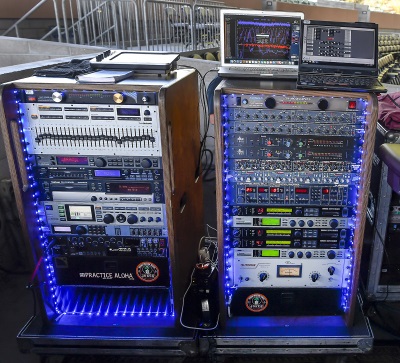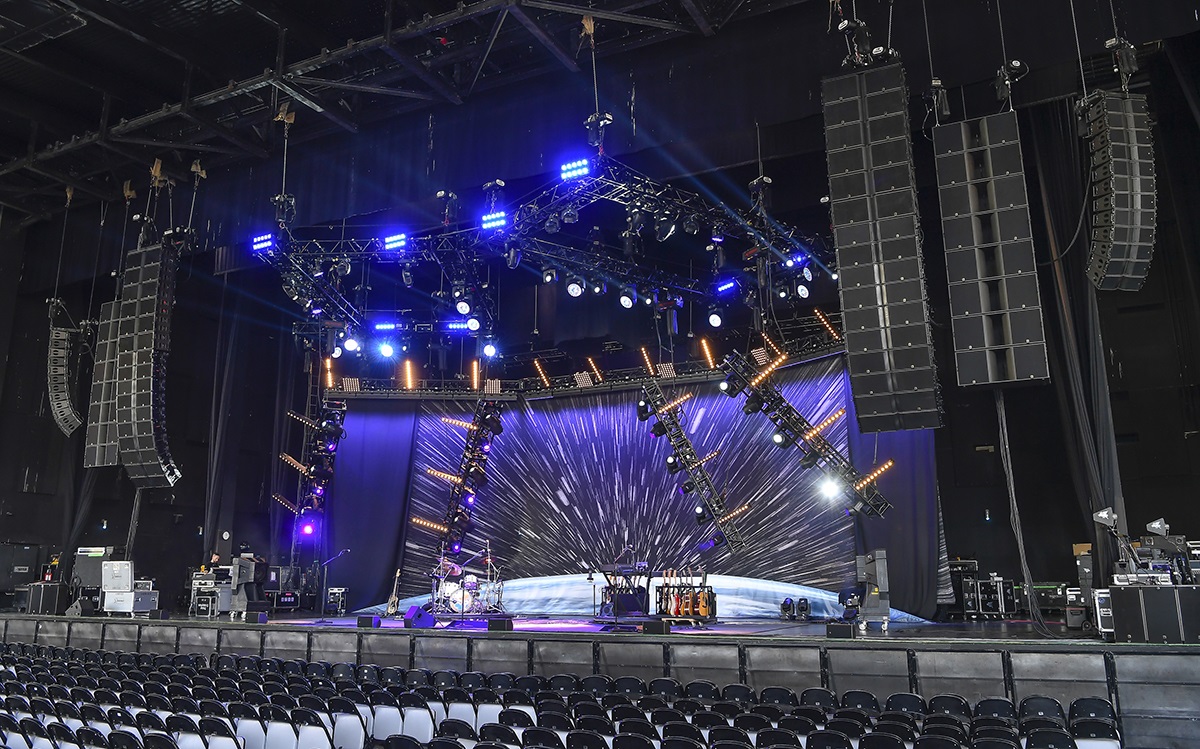
Since we use gain-sharing with the DiGiCo SD Rack, Fitzgerald has control of the preamps in monitor world and sets very consistent levels across the entire band instrumentation. Via his SD5 console, he sends a whole bunch of IEM mixes out to the band, crew and guests using Shure PSM 1000 personal monitoring systems.
He also has a pair of Eventide Eclipse harmonizers in his rack for acoustic guitars and takes a MADI split from his console to feed a Nuendo multitrack recording system for nightly recording of the show.
One feature of the DiGiCo platform and the Optocore redundant signal loop that we both take advantage of is “Console Send And Receive.” It allows us to “pick off” inputs from the other engineer’s end of the snake, so he picks up my FOH playback music and a stereo audience mic while I grab the Eventide Eclipse outputs. These inputs come into our consoles locally but are “visible” as an input for the other guy using this optional patch point. Very cool!
Fitzgerald’s stage is a very controlled acoustic environment. All players are on IEMs, with an L-Acoustics SB15 sub for the drummer and another for keyboards. A recent addition is an L-Acoustics X15 wedge, also for the keyboard player, to add a little “feel” because virtually every other instrument on stage has some sort of acoustic output on stage.
He characterizes Frampton’s mix as very “live,” incorporating both stage and room sound/feel. Fitzgerald deploys seven audience mics, including two Shure VP89M shotguns and three Audio-Technica AE3000 cardioid condensers in a left-center-right configuration across the front of the stage. A Shure VP88 stereo mic at the FOH mix position captures some of the room and PA sound.
“Depending on the venue, I equalize and blend different levels of each group of mics to find the best representation of the room, hopefully trying to avoid tough slapbacks, “tenty” tents, and really reverberant arenas, while keeping an overall balance that Peter can use for reference and respond to any audience member sitting in a specific location,” he explains. “The main goal is to make it sound like he’s not wearing any ear molds whatsoever. I want to create a natural acoustic stage sound.
“I also rely on song to song snapshot automation for input mutes, level control, and panning to place each band members instruments and vocal position in the mix according to where they are standing on stage, in relationship to each other, which changes from song to song,” he adds.
In closing, as many concert critics noted (and I concur) upon seeing and hearing these two great artists and their bands, it has been wonderful to travel back to a time when real guitars, amplifiers and live vocals rule the day, and not a single “track” was running in the background. Long live classic rock ‘n’ roll.

